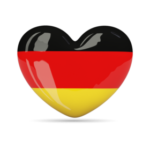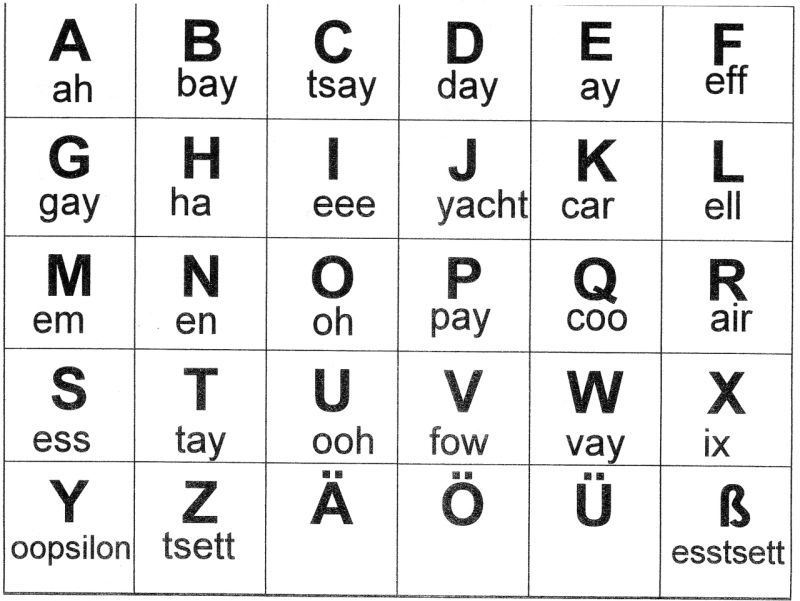 German is the most widely spoken language in Europe; there are about 90 million of its native speakers. In addition, this very language is considered as one of the official languages of many international organizations.
German is the most widely spoken language in Europe; there are about 90 million of its native speakers. In addition, this very language is considered as one of the official languages of many international organizations.
German is also called Dutch. It originates from the pre-Indo-European language. The origins of German writing date back to the VII-VIII centuries (for example, the song about Hildebrand, etc.). The global formation of phonetics, vocabulary and morphology was in the Middle Ages. The modern German language began to form in the 1650s on the basis of High German dialects. At this time, there were the attempts to systematize knowledge and to formulate punctuation and spelling rules. These processes were influenced by the labors of Martin Luther, the brothers Grimm, Goethe, Hermann Paul, Johann Adelung, Konrad Duden, and other figures.
The phonetic of other dialects (Low German, Alemannic, etc.) is not changed. That is why there is a big difference between various German dialects. Austrian and Swiss German are very different, since they are based on their own dialects, grammar and phonetics features are specific.
German Alphabet
German writing is based on Latin alphabet. There are 26 letters in this language. Usually, when listing German letters, the letters for umlaut sounds (ä, ö, ü) and escet ligatures (ß), Ö, Ä, Ü, ß are presented at the end of the list, although words are given in dictionaries without taking into account the umlaut. Ö, Ä, Ü differ from usual o, a, u in pronunciation, therefore, when studying the language, a special attention should be paid to them.
See also:
German alphabet;
German verbs;
German sayings.
The letter ß is an analog of double ss. It is used only in Germany and Austria, in Liechtenstein and Switzerland, full written «ss» is usually used. ß occurs in words with long or double vowels, it always stands in the middle or in the end of a word but it never stands at the beginning of a word. That is why, there is no capital version of this letter.

Before Latin alphabet, the Germans used runes for writing. They stopped to use them after the mass Christianization. Until the twentieth century, Gothic fonts (Fraktur) were used; after 1918, the antiqua font (Antiqua) came into general use. Antiqua was considered simpler and easier to perceive than a broken fracture type. Under Nazi Germany, there were attempts to restore Gothic writing, but later the Nazis themselves abandoned this idea. Nowadays, the fracture type is used only for book publishing and decorative purposes.
German Pronunciation
Many German sounds are similar to the usual Latin ones. Nevertheless, there are some features of pronunciation, which should be paid attention to.
Vowels
A [ɑ], O [ɔ], E [e], U [u], I [ɪ] are read normally, they are not really a difficult. Y [ypsilon] is pronounced like soft English U (for example, in English word “blue”). It’s more difficult to understand the reading rules for umlauts:
- Ö — is read as English “or” (for example, in English word “work”);
- Ä — is read as English “a” (as in English word “cat”);
- Ü — is read as German Y (see the explanation above).
Vowel Combinations
- ei — is read as “aɪ”;
- ie — is read as long “i:”;
- eu — is read as “ɔɪ”;
- äu — is also read as “ɔɪ”.
Consonants
- B [b] — is similar to English “b”, but its pronunciation is harder;
- C [tse] — is similar to English “k”;
- D [d] — is similar to English “d”, but its pronunciation is harder;
- F [f] — is similar to English “f”;
- G [g] — is similar to English “g”;
- H [ha] — is often unreadable; it just designates the separate pronunciation of two vowels, for example, as in the word “gehen”. At the beginning or in the root of the word, it is pronounced easily, on the exhale;
- J [yot] — is similar to English “y”;
- K [ка] — is similar to English “k”;
- L [l] — is similar to English “l”, but its pronunciation is a bit softer;
- M [m] — is similar to English “m”;
- N [n] — is similar to English “n”;
- P [p] — is similar to English “p”;
- Q [ku] — is used in combination with the letter u, together they are similar to English “kv”;
- R [r] — is usually used in the middle of the word; it is similar to English “r”, at the end of a word, it is reduced;
- S [s] — is similar to English “s”, but it is pronounced as “z” before or between vowels, for example, in the words sehen and lesen;
- T [t] — is similar to English “t”;
- V [f] — is similar to English “f”;
- W [v] — is similar to English “v”;
- X [iks] — is rarely, used; it is usually used in borrowed words and read as “ks”;
- Z [ts] — is similar to English “ts”.
Despite apparent similarity, German pronunciation differs significantly from English pronunciation. All German consonants are pronounced more intensely than English ones; they are never soften. Deaf consonants p, k, t are aspirate, this is especially noticeable at the end of word.
Consonant Combinations
- Ch is pronounced — as “h”;
- Chs is pronounced — as “ks”;
- Sch is pronounced — as “sh”;
- Tsch — as “ch”;
- Sp and st are pronounced — at the junction of the prefix and the root; they are read separately: “sp”, “st”, but if the letter combination is at the beginning or at the is pronounced root of the word it is pronounced as “shp” or “sht”;
- Ck is pronounced as hard English — “ck”;
- Tz is pronounced as — hard English “ts”;
- Suffix — tion is pronounced something between “sion” and “tion”, for example, in the word Station.
Stress
The first syllable or root are mostly stressed (if there is an unstressed prefix in the word) in German words. Another stress may be in borrowed words (for example, Computer, Schokolade). If the word has the suffix -tion mentioned above, it is always stressed. If the word changing, the stressed syllable does not change.
Tips for Learning German
Some people prefer to learn German with a teacher. The teacher disciplines you and controls the results of learning better. Communication with the teacher allows practicing spoken German and improving pronunciation and listening comprehension.
See also:
German audio lessons;
German video lessons.
Nevertheless, it s possible to study German on your own. For that, you should think over the structure of your classes in advance and develop your plan for learning language. It is important to devote an equal amount of time to listening, reading, grammar, vocabulary, and speaking.
At the initial stage, you should carefully learn German alphabet and pronunciation peculiarities; learn basic phrases and the basics of grammar. In the beginning, learn all nouns with their articles; this will be useful in the future for the formation of the plural and the declension of words. Use the acquired knowledge in practice: read simple texts and talk with native speakers (or even make short dialogs with yourself).
After that, try to form simple sentences into more complex texts, write small essays about yourself, weather, family, hobbies, etc. At this stage, you should start learning irregular German verbs, grammar rules, and declension of words.
It is important to understand the numerals at the beginning — to learn numbers and ordinal numbers and to decline them. This will be surely useful when shopping or booking a hotel.
Usually, at the stage of studying more complex aspects of the language, a stupor and further learning stop may occur. It is important to note the moment when the lessons do not bring results and pleasure anymore. In this case, you should remember about your initial motivation (what do you learn the language for?) and to develop structure of lessons.
Do not be afraid to start watching German videos with subtitles, read simple news or notes from the first lessons. They will help to abstract yourself from boring exercises from the textbook; they will also produce significant results.
When learning words, you can use mnemonics (to associate German words with familiar ones), write the names of objects on stickers and put them on the appropriate furniture or utensils, and use applications on your smartphone. Do not forget to use the learned words in speech, the essays or grammar exercises as well.
It is advisable to put down all written tasks in a notebook and read them aloud. It will help to remember the use of grammar rules better and to repeat the vocabulary. For your writing skills to be improved, you can do exercises from the textbook as well as write your own stories and notes, keep a diary in German, write short dialogs, do written translations, and keep a dictionary of the words you have learned.
It is great, if there is an opportunity to practice spoken German since the first months of learning. Native speakers speak fast and sometimes incomprehensibly, they can swallow letters or whole syllables. As for a number of German dialects. The sooner you will start speaking practice and speak with native speakers, the easier you will understand speech on the radio or TV in the future, the better your pronunciation will be and your speech will be more fluent and “modern”.
There are enough ways and practice tips to learn German and tips. Systematization, discipline, and good motivation are the main things for you to remember about any learning. If there are the all three components, the result will be fast and of high quality.
